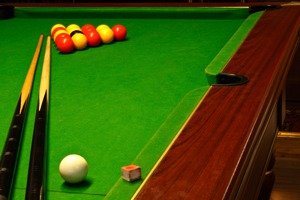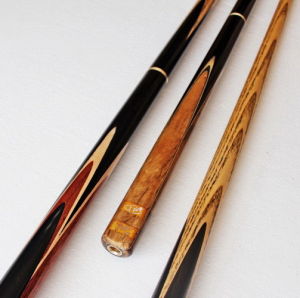
Pool and billiards can be played in many ways, but they have some key differences. They use different sizes of tables. Billiard tables are more spacious than pool tables and require larger balls. Billiard cues also have a thicker and shorter cue length than pool cues.
Carom billiards uses no pockets
Carom billiards have a distinct advantage over pocket billiards, in that the balls are not held in pockets. They also use three rather than the usual four balls. The cue used by players to shoot the balls should be directed in a way that produces certain ricochet results. These games require a lot of skill and ingenuity. Each player is allowed three turns. One player can earn as high as 500 points. The highest recorded score, however, is only 427.
Carom billiards' objective is to accumulate as many points as possible before your opponent and do it within a time limit. Each shot that is successful earns one point. A miss does not count as a win. Players can also try their hand at playing artistic billiards by using Aramith Carom Balls.
Only 3 balls were used
Billiards and pool are two variations of the carom. Both games have three balls, a carom and a red. The cue ball in carom billiards is the red ball. The yellow and brown are the balls that are used in carom billiards. Both games can be played at pool tables measuring five by ten feet.

In billiards, the game is played on a pocketless, five-by-10-foot table with three balls. Three-cushion pool billiards marks the cue ball with a single black dot. The object is always the red ball. The game's aim is to score as much points as possible.
A directional nap is a distinctive feature of Snooker cloth
Snooker cloth is distinguished by its directional nap, which influences the trajectory. It is thick and made of 100% wool. This is a different cloth from carom, which is typically worsted for speed. Both types of cloth serve different purposes and are used in different ways.
It is easiest to see the difference in direction when you are moving slowly towards the middle. If the ball falls into the side cushion, it will be dead weight. To prevent this, aim your shot towards either the far or inside jaw of the middle pouch.
Modern billiards cues
Modern billiards cues are distinctly different from pool cues in several ways. They can be made from different materials and have male and female connections made almost exclusively from brass or steel. These materials are resistant to temperature fluctuations and shrink less than other material. Some cues have precious stones and silver inlays, which are just a few of the many materials used.
Billiards evolved from stick and ball games played outdoors. This game is also called "ground billiards" and is very similar to modern sports like croquet, golf, and hockey. Modern billiards cues have different functions, despite the similarities.

History of billiards
The history of billiards and pool dates back to the 14th century, when ground billiards were invented. The origin of the word 'billiards' is unclear, but two French words are suspected of being the source. The first refers to the machete used to smash the balls. The other is billette which is French for tail. Frenchmen were also involved in the game's development, along with the English-language creators.
Billiards and pool gained popularity in England and Europe in the early eighteenth centuries. King Henry VIII, Edward VI, and the Archbishopof Glasgow all attended events that featured pool. Cardinal Thomas Wosley, a friend, also wrote a letter in praise of the game. Billiards was an important game. French kings, noblemen, and others commissioned joiners to make their billiard tables in the 17th Century. The game has evolved significantly over the years, with the role played by pockets changing with the times.